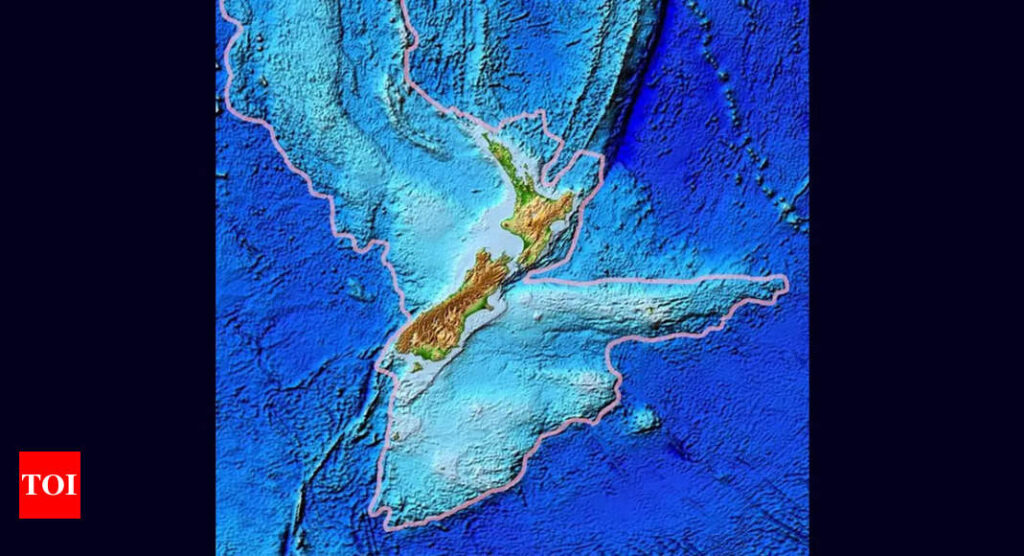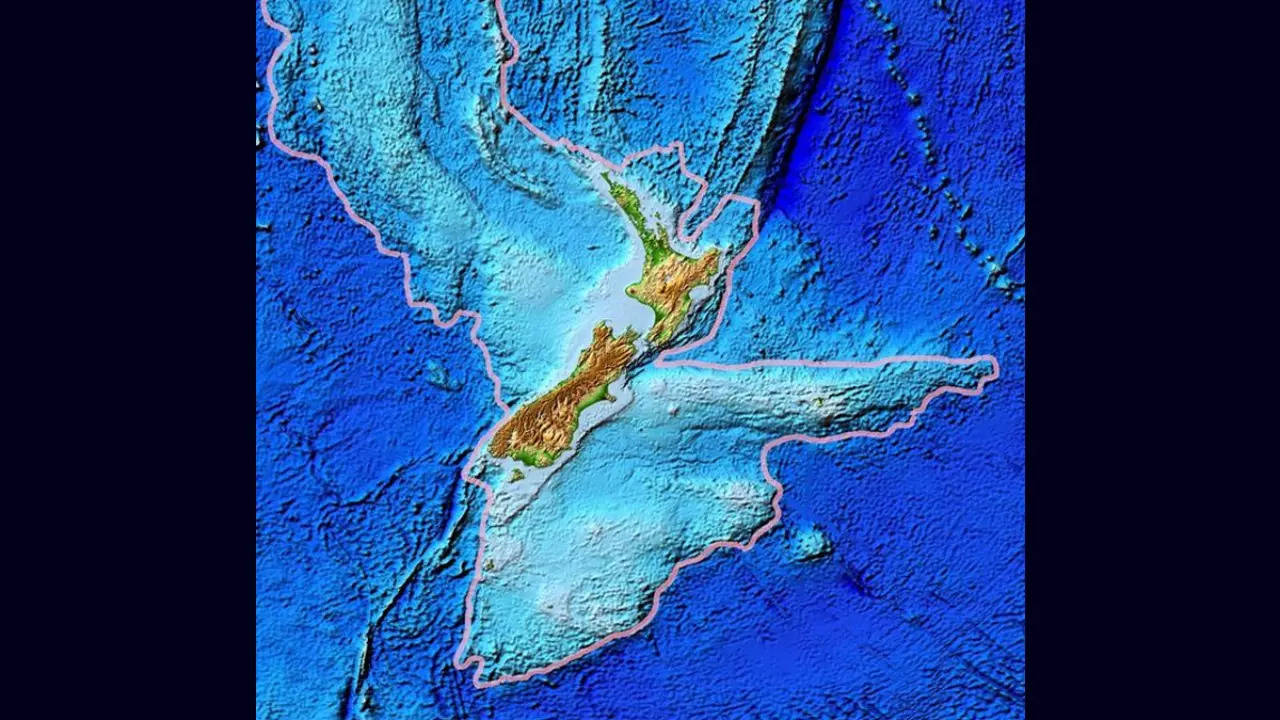[ad_1]
An international team of geologists and seismologists has created a newly refined map of Zealandia—considered to be the ‘eighth continent of the world’ that is beneath the Pacific Ocean—using data obtained from dredged rock samples recovered from the ocean floor.
Their study on Zealandia, which is a vast continent of 1.89 million sq miles (4.9 million sq km) that is around six times the size of Madagascar, has recently been published in the journal Tectonics.
Prior research suggested that approximately 83 million years ago, the supercontinent Gondwana was pulled apart by geological forces, resulting in the beginnings of the continents —Asia, Africa, Europe, North and South America, Australia/Oceania and Antarctica— that exist today. It also resulted in the creation of Zealandia, which is believed to be 94% under the sea—the remaining 6% make up New Zealand and surrounding islands.
In this new effort, the research team sought to refine existing maps of Zealandia by studying collections of rocks and sediment samples brought up from the ocean bed. The team then studied the samples as part of a secondary study that involved analysing seismic data for the region. They then created a more refined map of the whole Zealandia continent.
Study of the rock samples showed geologic patterns in West Antarctica that hinted at the possibility of a subduction zone near the Campbell Plateau off the west coast of New Zealand. The newly refined map shows not only the location of the magmatic arc axis of the Zealandia continent but other major geological features as well.
A 2021 study done earlier suggested that Zealandia is 1 billion years old, about twice as old as geologists previously thought. By approximately 23 million years ago, the landmass may have been completely submerged.
With a total area of approximately 4,900,000 km2 (1,900,000 sq miles), Zealandia is substantially larger than any features termed microcontinents and continental fragments. If classified as a microcontinent, Zealandia would be the world’s largest microcontinent. Its area is six times the area of Madagascar, the next-largest microcontinent in the world, and more than half the area of the Australian continent.
Zealandia is also substantially larger than the Arabian Peninsula (3,237,500 km2 or 1,250,000 sq mi), the world’s largest peninsula, and the Indian subcontinent (4,300,000 km2 or 1,700,000 sq mi). Due to these geological considerations, such as crustal thickness and density, some geologists from New Zealand and Australia have concluded that Zealandia fulfils all the requirements to be considered a continent rather than a microcontinent.
Their study on Zealandia, which is a vast continent of 1.89 million sq miles (4.9 million sq km) that is around six times the size of Madagascar, has recently been published in the journal Tectonics.
Prior research suggested that approximately 83 million years ago, the supercontinent Gondwana was pulled apart by geological forces, resulting in the beginnings of the continents —Asia, Africa, Europe, North and South America, Australia/Oceania and Antarctica— that exist today. It also resulted in the creation of Zealandia, which is believed to be 94% under the sea—the remaining 6% make up New Zealand and surrounding islands.
In this new effort, the research team sought to refine existing maps of Zealandia by studying collections of rocks and sediment samples brought up from the ocean bed. The team then studied the samples as part of a secondary study that involved analysing seismic data for the region. They then created a more refined map of the whole Zealandia continent.
Study of the rock samples showed geologic patterns in West Antarctica that hinted at the possibility of a subduction zone near the Campbell Plateau off the west coast of New Zealand. The newly refined map shows not only the location of the magmatic arc axis of the Zealandia continent but other major geological features as well.
A 2021 study done earlier suggested that Zealandia is 1 billion years old, about twice as old as geologists previously thought. By approximately 23 million years ago, the landmass may have been completely submerged.
With a total area of approximately 4,900,000 km2 (1,900,000 sq miles), Zealandia is substantially larger than any features termed microcontinents and continental fragments. If classified as a microcontinent, Zealandia would be the world’s largest microcontinent. Its area is six times the area of Madagascar, the next-largest microcontinent in the world, and more than half the area of the Australian continent.
Zealandia is also substantially larger than the Arabian Peninsula (3,237,500 km2 or 1,250,000 sq mi), the world’s largest peninsula, and the Indian subcontinent (4,300,000 km2 or 1,700,000 sq mi). Due to these geological considerations, such as crustal thickness and density, some geologists from New Zealand and Australia have concluded that Zealandia fulfils all the requirements to be considered a continent rather than a microcontinent.
[ad_2]
Source link











More Stories
We can’t wait to face India in the final: Pat Cummins | Cricket News
Railways plans 3,000 additional trains in next 4-5 years to minimise number of waitlisted tickets | India News
Faridabad: Man dies after ‘falling from hotel room window’ while partying with friends